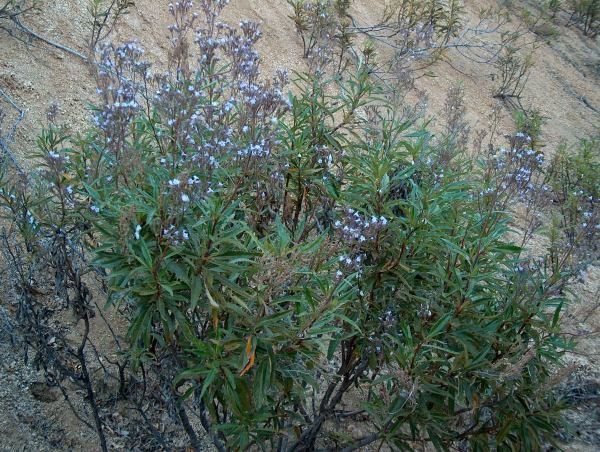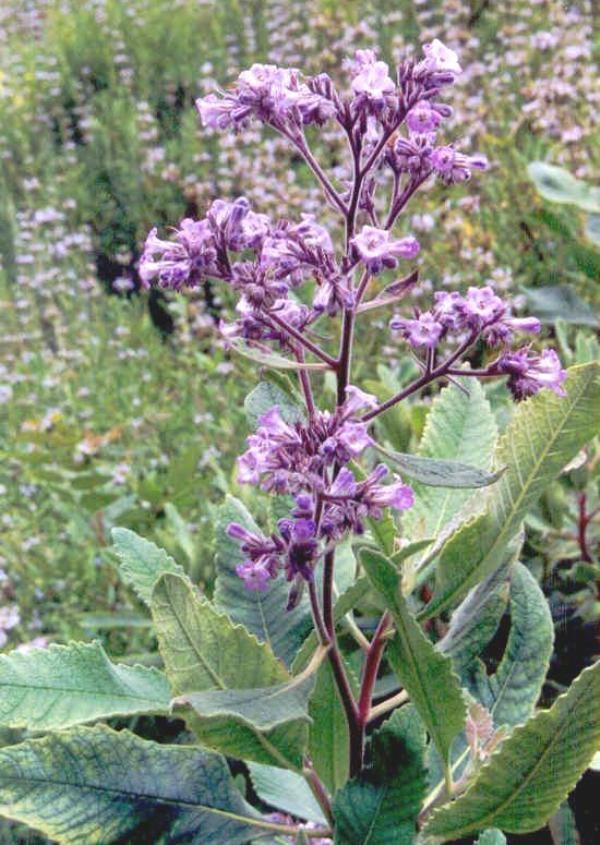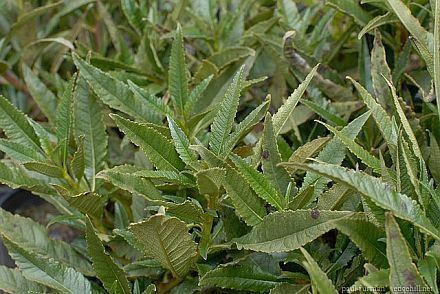Kingdom Plantae Family Boraginaceae Genus Eriodictyon Higher classification Eriodictyon | Order (unplaced) Subfamily Hydrophylloideae Scientific name Eriodictyon californicum Rank Species | |
 | ||
Similar Eriodictyon, Eriodictyon crassifolium, Hydrophylloideae, Eriodictyon trichocalyx, Adenostoma fasciculatum | ||
Eriodictyon californicum is a species of plant within the Boraginaceae family. It is also known as yerba santa, mountain balm, consumptive's weed and bear weed.
Contents

Distribution
It is native to California and Oregon, where it grows in several types of habitats, including chaparral and Coast redwood forests.
Description

Eriodictyon californicum is a shrub growing one to three meters tall, typically found in clonal stands. The smaller branches and foliage are coated in a sticky resin and are often dusted with black fungi, Heterosporium californicum. The shrub is known to be an occasional source of nutrition for wildlife and livestock. The narrow, long leaves are somewhat lance-shaped and up to 15 centimeters in length. They have an odor generally considered unpleasant and a bitter taste, making them unpalatable to most animals, although it does have multiple insect herbivores. For example, it is the primary nectar source for Variable Checkerspot butterflies in the Jasper Ridge Biological Preserve in California. The inflorescence is a cluster of bell-shaped white to purplish flowers, each between one and two centimeters in length.
Taxonomy
When first described, it was placed in genus Wigandia, so its basionym is Wigandia californica.
Traditional medicine

The leaves have historically been used to treat asthma, upper respiratory infections and allergic rhinitis. The Concow tribe calls the plant wä-sä-got’-ō (Konkow language) The Chumash used it as a poultice for wounds, insect bites, broken bones, and sores. It was also used in a steam bath to treat hemorrhoids.
Food use

Eriodictyol is one of the 4 flavanones identified in this plant by the Symrise Corporation as having taste-modifying properties, the other three being: homoeriodictyol, its sodium salt and sterubin. These compounds have potential uses in food and pharmaceutical industry to mask bitter taste.
Environmental use

This species of shrub is used for revegetating damaged or disturbed lands, such as overgrazed rangeland. It is, however, strongly fire-adapted, sprouting from rhizomes after wildfire and developing a waxy film of flammable resins on its foliage.
Butterflies
Eriodictyon californicum is a specific Papilio eurymedon butterfly food and habitat plant.
